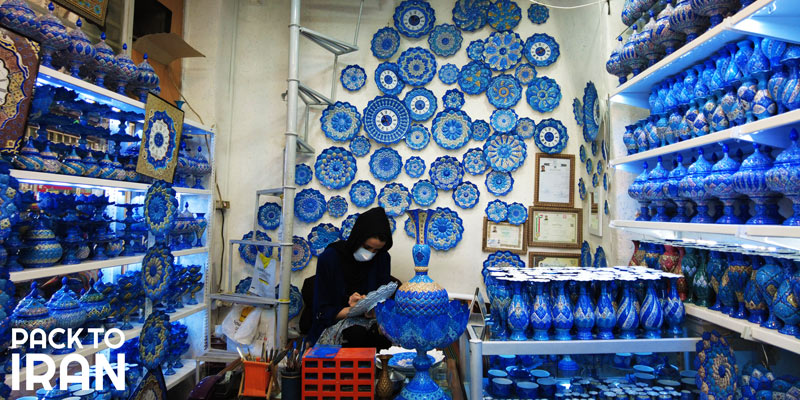Kilim is a flat tapestry-woven carpet, and it is produced by interweaving warp and weft strands. The weft strands which carry the designs and colors are woolen, while the hidden warp strands can be wool or cotton. Weaving kilim is a nomadic art and in Iran which is one of the ancient lands where kilims were woven, this is a feminine chore and in a tribe or village all hand woven crafts and rugs are made by the women and young girls.
Motifs
Kilim is known for its geometric and abstractive motifs with a fantastic harmony of forms and colors. These motifs are divided in different groups:
Basic geometrical shapes: triangles, hexagons, rhomboids, squares, etc.
Animal motifs: goats, horses, birds, scorpions, turtles, etc.
Floral motifs: different types of flowers, bushes, leafs and trees.
Kilim weaving areas in Iran:
Iranian kilims are woven in every corner of the country, including Khurasan, Baluchistan, Fars, Kurdistan, Azerbaijan and other provinces and each area has its very own style and method in weaving and creating motifs. Below are some of the most famous kilim weaving areas in Iran:
Shahsevan:
Known as one of the most significant Iranian Kilims, Shahsevan kilims woven by the tribes in northwest of Iran (Azerbaijan Province) are very fine and are named “Sumak” or “Varni”. The motifs of Shahsevan kilims include gazelles, horses and birds, framed with geometrical motifs. Shahsevan kilims are so diverse that no kilim is the same as the other one.

Lur:
The Lur nomads living in western Iran, make kilims with very high quality and saddlebags which are used for carrying utensils are among their best kilim products. Luri kilims are usually know with the motifs of animals that live in Luri areas and they are in green, black, blue and white.

Khamseh:
Khamseh (literally meaning five) is a tribe including five groups and their kilims are among the Sumak kilims with dark colors and star shaped and diamond motifs.

Baluch:
Baluch nomads who live in southeast of Iran weave their kilims with dark colors like crimson, dark blue, and brown and striped designs. The colors and motifs are rooted in Baluch culture and legends.

Hersin:
Hersin is a village in Kermanshah Province and is known for having fine kilims with happy colors and tiny motifs filling the margins.
Qashqai:
The happy and sharp colors on the kilims of the Qashqai tribe are the result of the lush environment and plains that nomads view while they migrate in Fars Province. The main Qashqai kilim motifs include geometric motifs and animals like picklocks, gazelles, and goats.

Turkmen:
Turkmen tribes living in the northeast of Iran weave kilims with distinctive motifs. The kilims are ususally in red and motifs are hexagon and octagon shapes named “Gol”, which means flower. In the Turkman kilims, each Gol is the symbol of one family.









